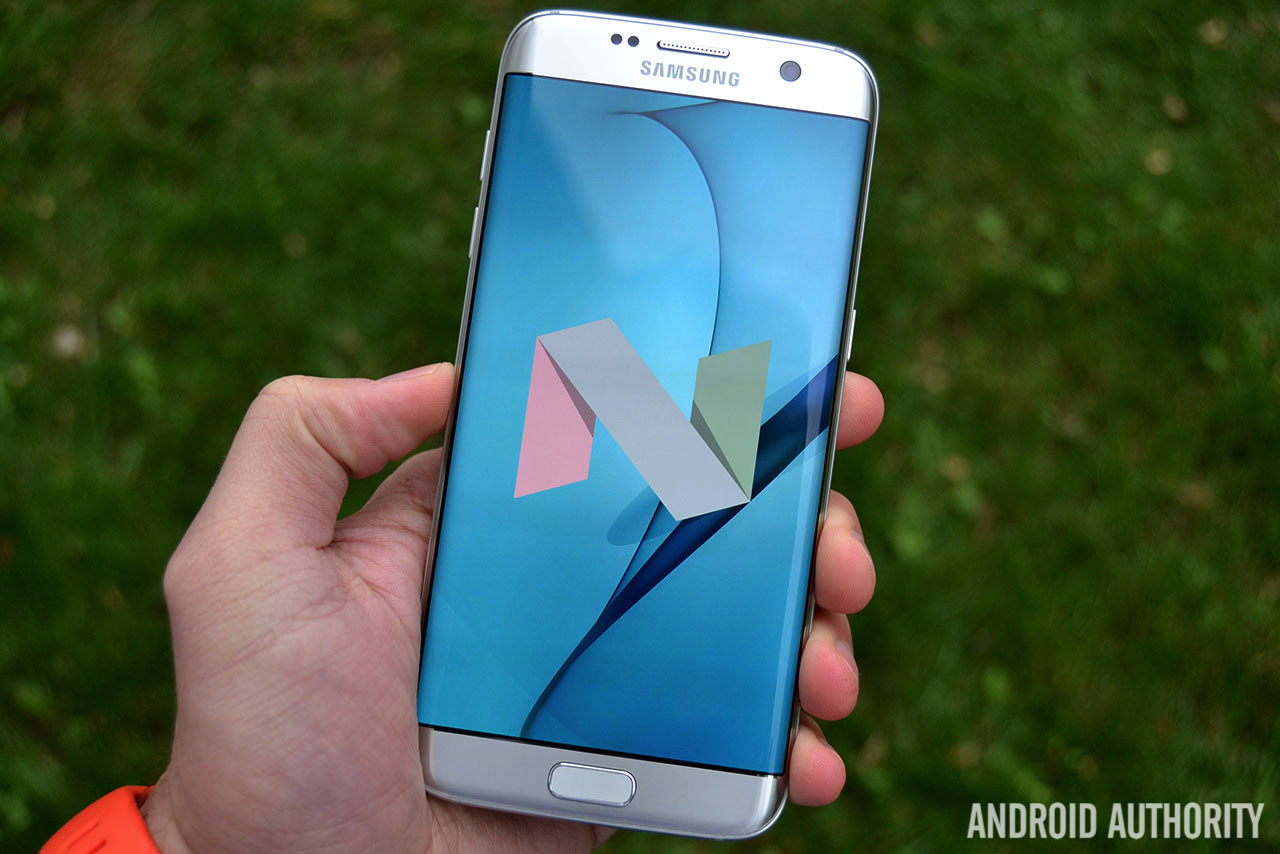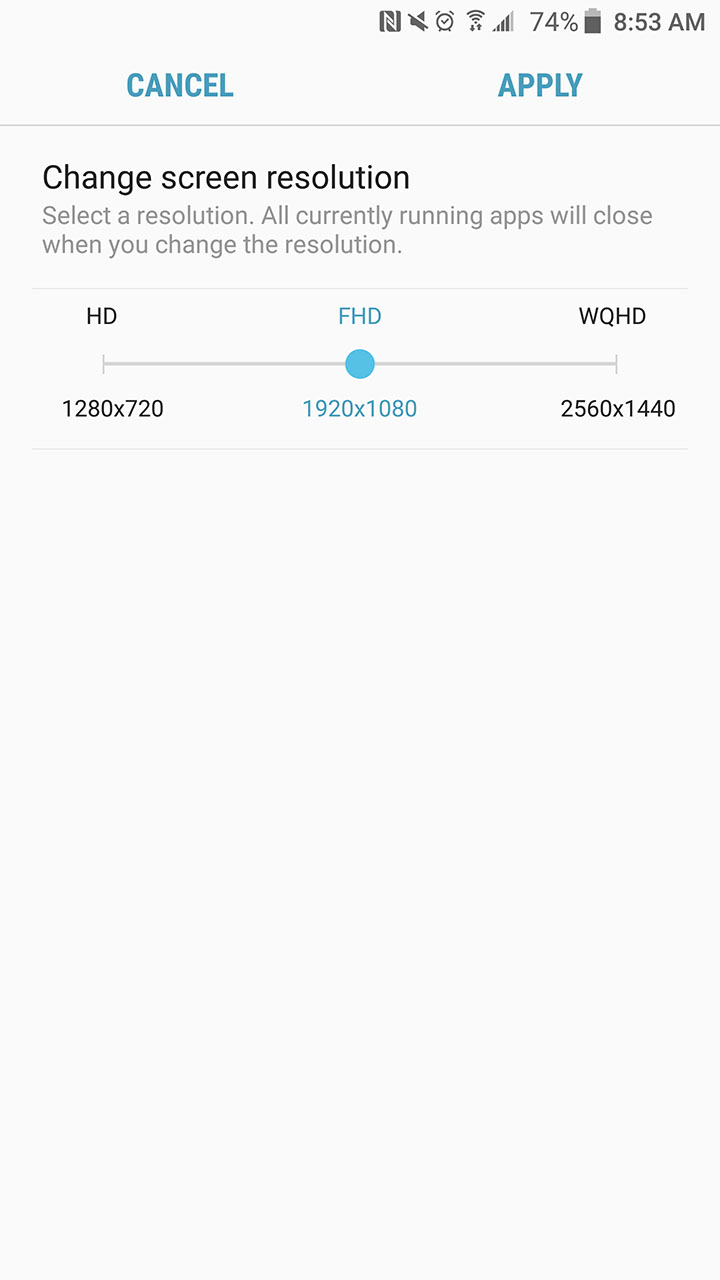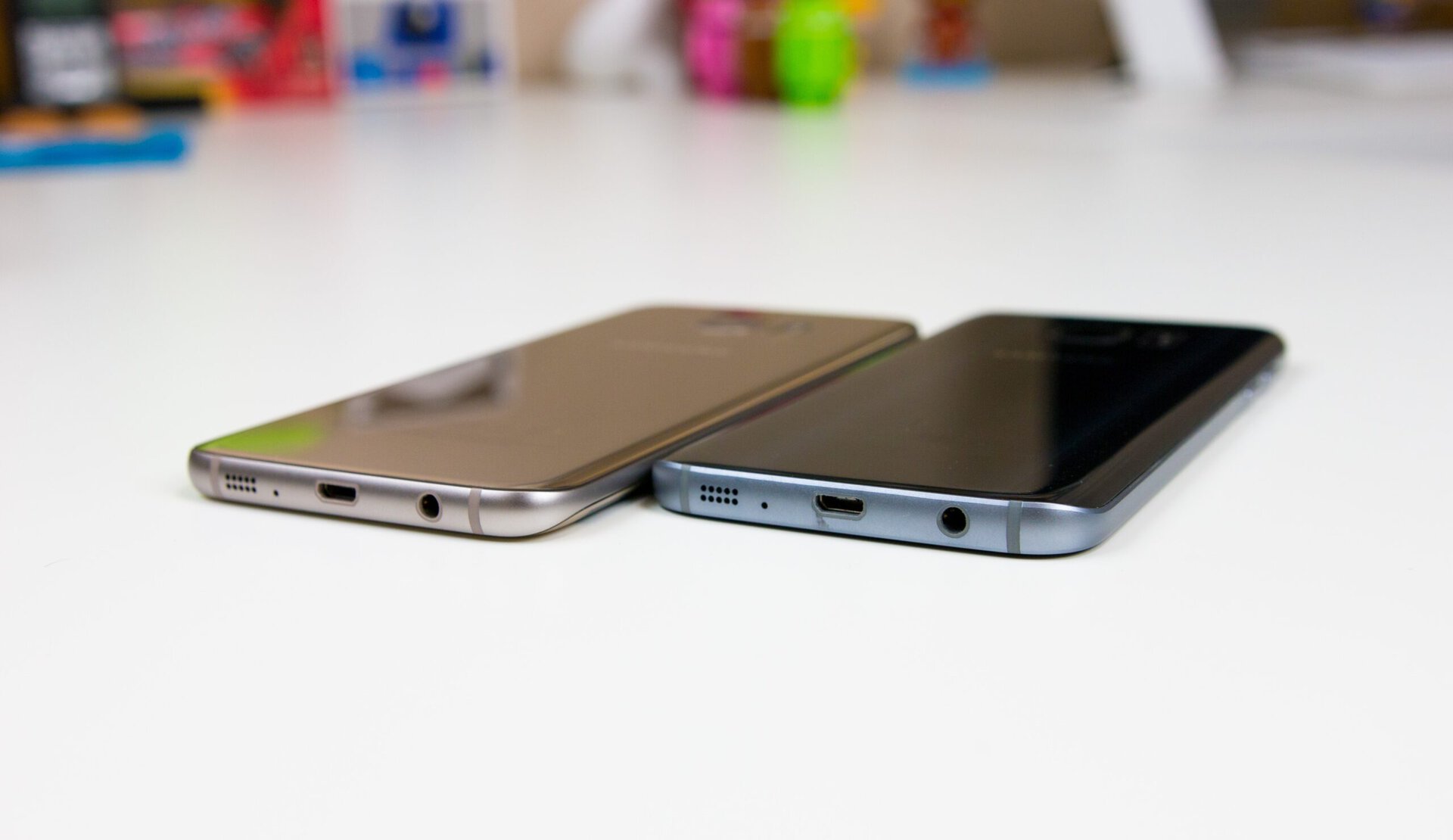Affiliate links on Android Authority may earn us a commission. Learn more.
Latest Nougat beta for the Galaxy S7 defaults to 1080p display

The Samsung Galaxy S7 Android Nougat beta test is currently underway, before Samsung rolls out its latest software features to the wider public. However, some may have noticed that the display quality looks a little different with the latest beta version, as the resolution has been notched down from QHD (2560×1440) to FullHD (1920×1080) by default.

Interestingly enough, it’s quite likely that many users haven’t even noticed the difference. While some fonts and images may not look quite as sharp, optimized web elements and video streaming quality limits mean that a lot of content doesn’t look any different on a 1080p versus 1440p display anyway, especially on the Galaxy S7’s 5.1-inch panel. QHD is typically more useful on devices with a display above 5.5-inches, although users who opt to downgrade to the 720p mode will notice a much greater difference.
Why would Samsung include this type of feature? Perhaps the company has found a sweet spot between battery life and image clarity.
So why would Samsung include this type of feature? Battery life is probably the biggest factor, along with heat, as a lower resolution puts less strain on GPU and memory bandwidth. When you consider even the small UI animations that are rendered over and over again each day, a reduction in GPU power could add up over a day’s use. We’re not talking huge battery life extensions, but for heavy users this could make the difference between getting through the day on a single charge. Of course, display brightness, running apps, and signal strength are bigger contributing factors to battery life.

Along with the resolution scaling option, Samsung has also included additional “screen zoom” options, which replace the old Condensed setting. Users can now opt for tiny or huge settings, with the former allowing for a little more content on the screen just like the old condensed option. Huge mode scales up object significantly for those who struggle to make out text and UI elements.
It will be interesting to see whether Samsung keeps the 1080p default option for its finished Nougat build. Perhaps the company believes it’s found a sweet spot between battery life and image clarity, while still allowing advanced users to go all out on QHD if they so wish. It’s also an interesting prospect for the rumored arrival of a 4K display with the Galaxy S8, as the panel might just kick into its highest resolution to watch 4K content or play a VR title, much like Sony’s Xperia Z5 Premium.